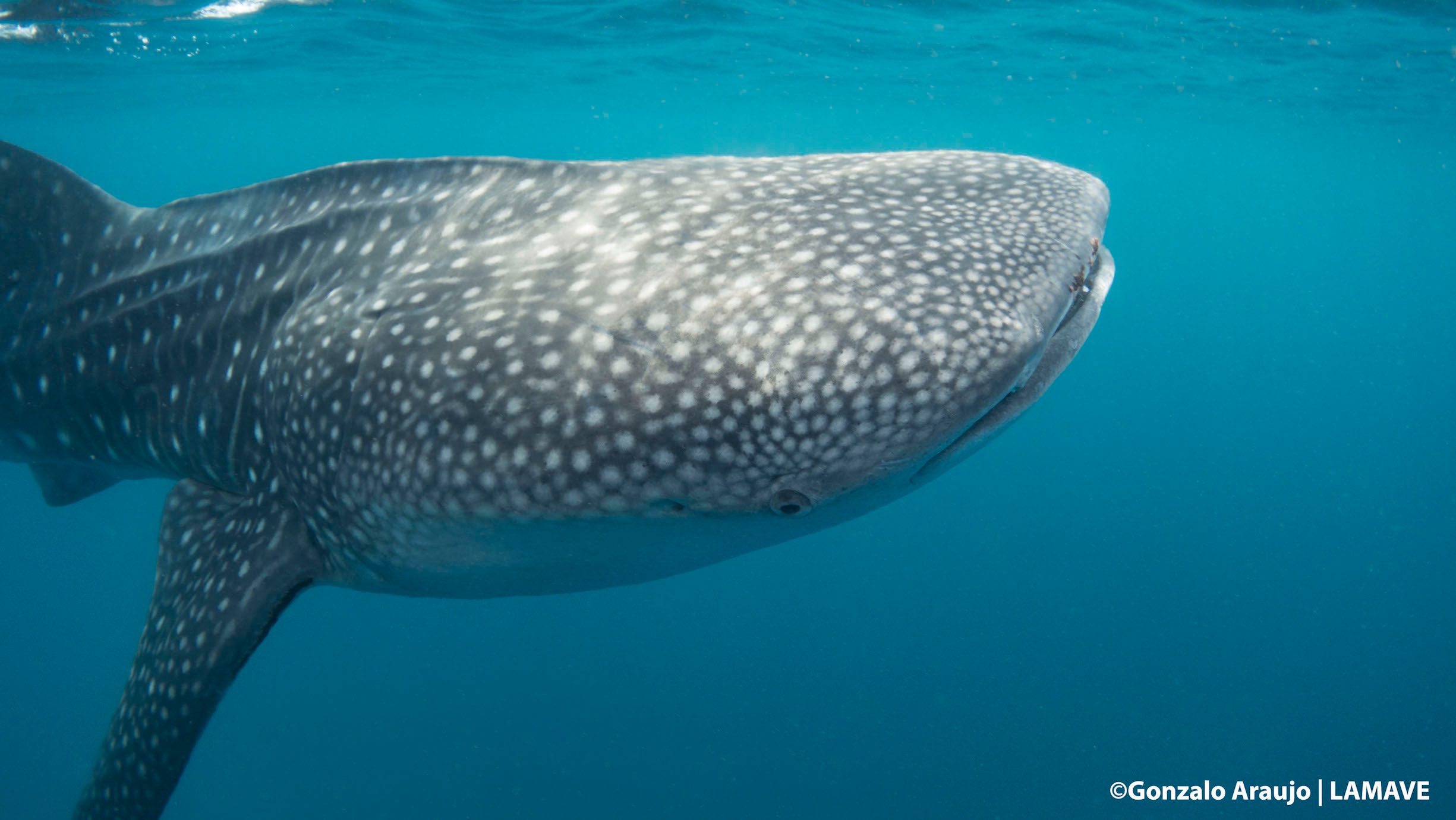SUMMARY
This is AI generated summarization, which may have errors. For context, always refer to the full article.

MANILA, Philippines – A team of researchers from the Large Marine Vertebrates (LAMAVE) Project found the 900th whale shark recorded in the Philippines on November 15, 2015 in waters off Southern Leyte.
Reaching the 900th whale shark is a milestone for a species that many had thought had dwindled in 1998.
The team verified the find by taking a photo of the spot pattern on animal’s left side and uploading it to whaleshark.org, the online photo-identification library of whale sharks.
Sally Snow, Media Director of LAMAVE, said a government law (Fisheries Administrative Order no. 193 of 1998) to ban the hunting of whale sharks and manta rays was the result of the fishermen’s declining catch and many thought that the whale shark population in the Philippines – known locally as butanding and balilan – was steeply declining.
However, starting in 2006, Snow said researchers started seeing more of the whale sharks, a sign that the species has begun recovering; and indentifying the 900th whale shark indicated that they continue to recover.
According to Snow, whale sharks are a “brilliant indicator” of the seas’ health, so knowing that there have been 900 identified and more possibly roaming the waters means good news for conservationists.

‘Amazing pockets of ocean’ under threat
Snow said there are amazing places in the Philippines showcasing rich marine life. However, there are still threats to these “amazing pockets of ocean,” many of which are man-made.
Climate change has played a role in hindering further progress on the seas’ health.
Whale sharks, according to Snow, spend time near the sea surface and they rely primarily on plankton since they use filter-feeding. However, the oceans are getting warmer and more acidic, which could kill the plankton that whale sharks and other large fish eat. Without their source of food, it would be difficult for the whale sharks to survive. (READ: Food chain collapse predicted in world’s oceans)
Instead, what sea creatures might eat would be the plastic thrown into the water. A large amount of plastic bags, for example, are thrown in Manila Bay and Snow said the whale sharks and other marine creatures accidentally ingest them. (READ: Plastic pollution choking Australian waters – study)
Factors like illegal fishing and mismanaged tourism are also detrimental to the whale sharks’ recovery. Despite their protected status, some illegal fishing activities are still taking place; and because whale sharks travel around the world, Snow said it is possible for them to be caught in other countries.
Staying on track
There is, however, a cause for hope. Because many of the problems are man-made, it is possible to act to remove them.
Tourism, which accounted for 7.8% of the country’s income in 2014, must be properly managed to avoid damaging the environment. Snow urged visitors to the country to “be the best tourists (they) can be, which means respecting the area, environment, and the locals.”
According to Snow, tourism and conservation can be balanced by imposing the necessary regulations to make it more sustainable. She said little things like removing trash and banning flash photography are steps in the right direction.
Conserving the whale shark population still hangs in the balance. As a vulnerable species, it is still in danger of being lost completely because of human activities.
LAMAVE believes Filipinos have every reason to play their part in the conservation efforts. As an alternative source of income, residents living near the whale sharks’ habitats rely on the tourism the whale sharks bring.
However, Snow said the connection between Filipinos and the butanding go beyond financial benefits. “It’s an iconic animal,” she said, citing its appearance on the 100 peso bill. “It’s a part of our lives here,” she added. – Rappler.com
For more information on the research of whale sharks and other large marine vertebrates, visit www.lamave.org. If you have a photo of a whale shark sighting, you can assist the ongoing research by uploading it on www.whaleshark.org.
Add a comment
How does this make you feel?
There are no comments yet. Add your comment to start the conversation.